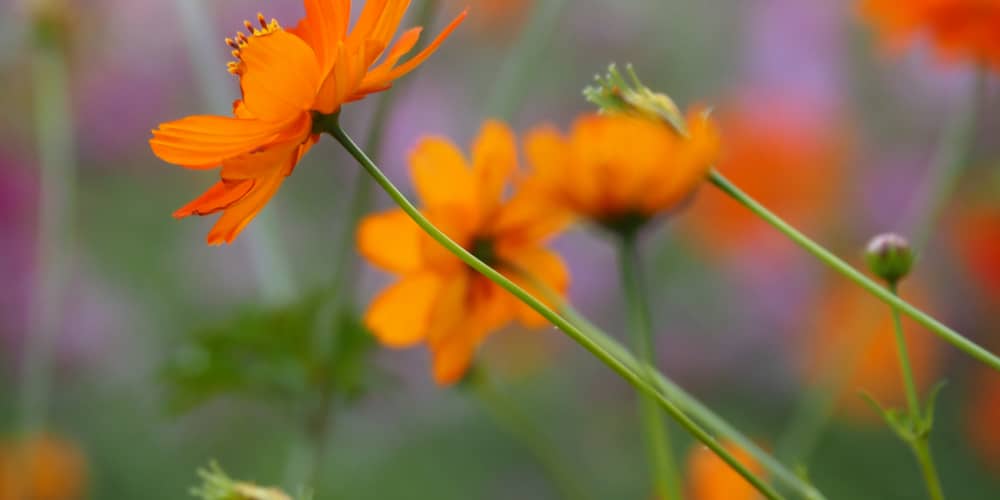Deadheading cosmos is an essential garden chore that keeps plants looking tidy and encourages new blooms. It’s also one of the easiest tasks to do and can be completed in just a few minutes.
In this post, we’ll show you how to quickly and quickly deadhead cosmos, so your plants continue to look beautiful all season long. Let’s get started!
What Is Deadheading?
Deadheading is the process of removing dead or dying flowers from a plant. It is typically done to improve the plant’s appearance or to encourage new growth.
This practice can also be used to prevent the plant from producing seeds. Seeds require a lot of energy to produce, and by removing them, the plant can redirect that energy into other areas, such as leaves or roots.
It is a fairly simple process that can be done with a sharp knife or scissors. It is important to ensure that all dead flowers are removed, including the stem. If any part of the flower is left behind, it can continue to draw energy from the plant, preventing new growth.
Deadheading is an important gardening technique that can greatly impact the health and appearance of your plants.
Do Cosmos Need To Be Deadheaded?
Imagine a meadow of wildflowers, nodding in the breeze and swaying in the sunlight. Amongst the sea of color, you spot a splash of pink. You walk closer and find it’s a cosmos flower, its delicate petals, and center a deep hue. Cosmos are one of the easiest flowers to grow and make an excellent addition to any garden. But do they need to be deadheaded?
The answer is yes. Deadheading is essential if you want your cosmos to produce more flowers. By removing spent blooms, you encourage the plant to produce new ones.
Deadheading encourages the plant to produce new flowers, which means that your cosmos will keep blooming for longer. Again, deadheading helps to prevent the plant from self-seeding. Once the flowers have been removed, new buds will begin to form almost immediately, so you can expect to see more blooms in just a week or two.
How To Deadhead Cosmos
Cosmos are one of the most popular flowers for cutting gardens. They are easy to grow and produce abundant beautiful blooms from early summer until fall. Best of all, cosmos will continue to bloom profusely as long as you keep up with deadheading.
First, start with sanitizing your cutting tools. This will help prevent disease spread from one plant to another. You can do this by dipping your scissors or knife in a solution of bleach and water.
Next, identify the flowers that need to be removed. These are typically the ones that are wilted, brown, or have started to fade in color. Once you’ve found them, cut the stem about an inch or two below the bloom.
Make your cuts at an angle so that water can’t sit on the stem and cause it to rot. Also, avoid cutting too close to the main plant, damaging new growth.
After you’ve removed all of the spent blooms, give the plant a good watering. This will help to encourage new growth and prevent the plant from stress.
And that’s it! You’ve now successfully deadheaded your cosmos, and they will continue to bloom all season long.
Do Cosmos Need To Be Sheared Back?
Yes, you can shear back cosmos if they become leggy or overgrown. This will help to encourage new growth and prevent the plant from becoming too top-heavy. However, cosmos are relatively self-cleaning and often drop their spent blooms on their own.
If you choose to shear back your cosmos, wait until after they bloom. Cut the plants back by about one-third to one-half of their total height. This will encourage new growth and help to prevent the plant from becoming too top-heavy. After shearing, be sure to fertilize the plants to help them recover.
Saving The Seeds
Before deadheading, your cosmos, get a few mature seeds from the spent blooms. The seeds can be planted in the spring to produce new plants. To harvest the seeds, simply wait until the bloom has faded and cut it open. The seeds are small and black and will be found in the center of the flower.
After you’ve collected the seeds, store them in a cool, dry place until you’re ready to plant them.
Conclusion
Cosmos are one of the easiest flowers to grow and make an excellent addition to any garden. By deadheading spent blooms, you encourage the plant to produce new ones. This will keep your cosmos blooming all season long. Be sure to also save a few seeds so you can enjoy them next year!

